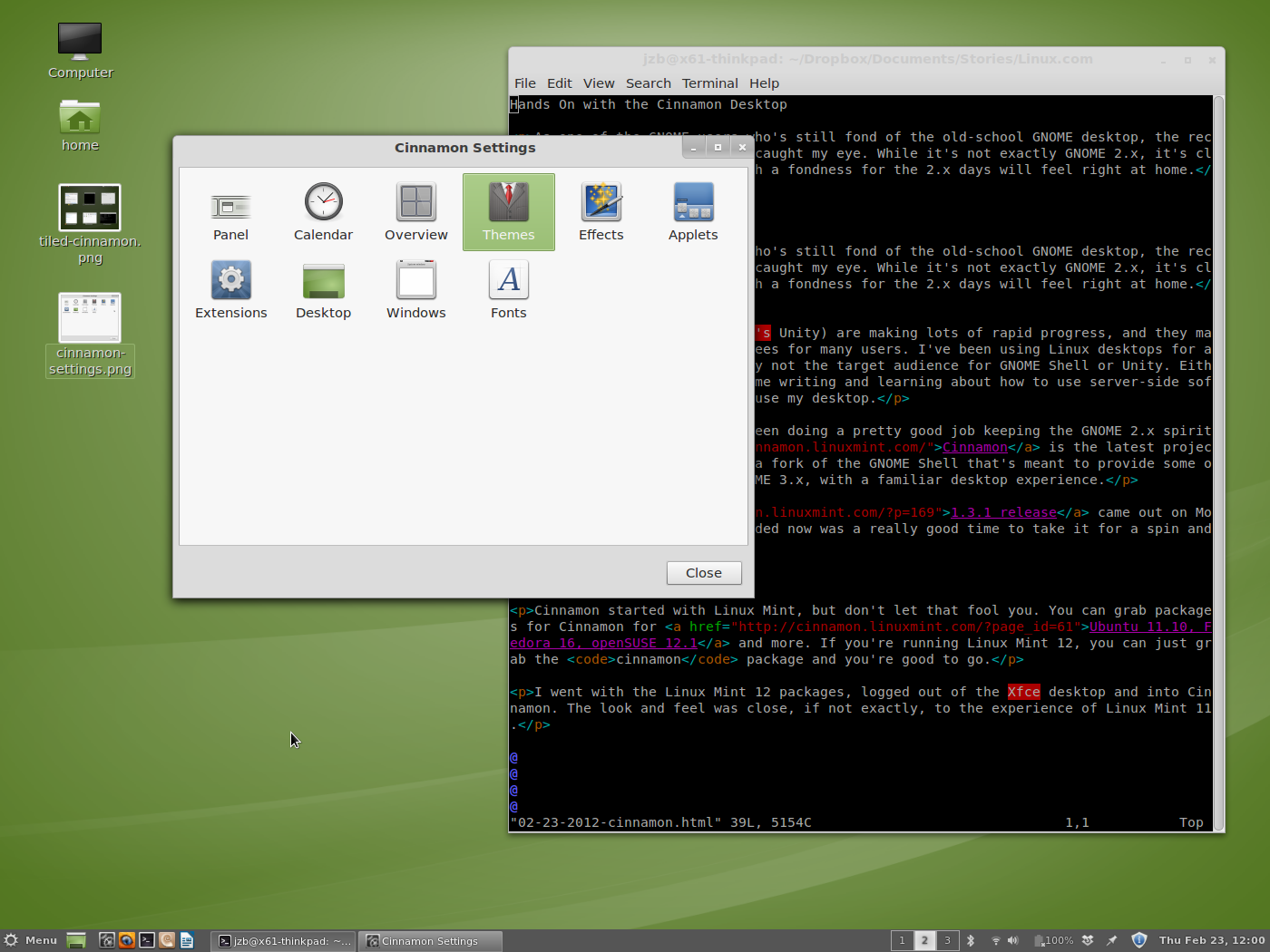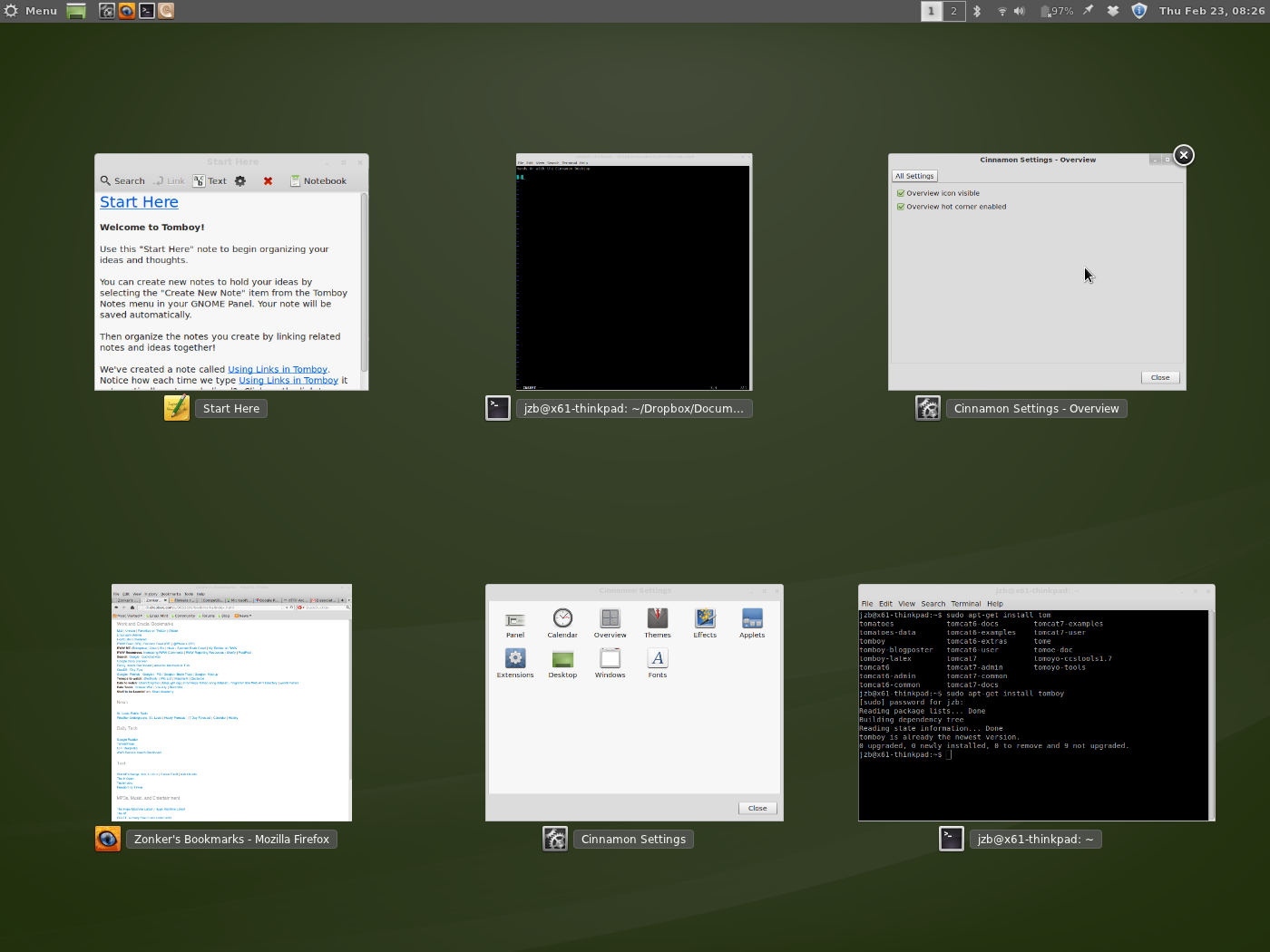Many Linux distributions specialized for multimedia distributions have come and gone. Some were pretty good, but Dream Studio has outshone them all. Musician and maintainer Dick Macinnis has just released Dream Studio 11.10, based on Ubuntu Oneiric Ocelot. Dream Studio 11.04 is a tough act to follow – is it worth upgrading to 11.10?
Chasing Ubuntu
Basing a custom distribution on Ubuntu has a lot of advantages, but it also means chasing a fast-moving target. There are ways to minimize the pain, as Macinnis explains. "The decision to create different versions of Dream Studio is one I had made quite a while ago, and is one of the reasons I decided to get all my packages into PPAs rather than on a personally hosted repo."
PPAs are Personal Package Archives hosted on Canonical's Launchpad. This is a slick way to make third-party package repositories available in a central location. Ever wonder what goes into making your own Linux distribution? Even when you base it on another distro like Ubuntu it's still work.
"When I build the Dream Studio each release cycle, I basically install Ubuntu on a VM, make sure all the packages will install properly, and run a script to add my personal optimizations and such. Then I use Ubuntu Customization Kit to unpack the stock Ubuntu liveCD, run the script I've made on it via chroot, and pack it up again," says Macinnis. "Dealing with changes in Ubuntu from one release to the next is the biggest issue and takes the most time, which is why I don't begin until Ubuntu has been released (as chasing a moving target was driving me nuts a couple releases ago). However, since almost all my packages are now desktop independent (except artwork), making derivatives with different DEs is quite easy."
Sure, it's easy when you know how. Vote for your favorite desktop environment in Macinnis' poll, and be sure to vote for LXDE because that is my favorite. Or E17, which is beautiful and kind to system resources. Or maybe Xfce.
System Requirements
Dream Studio 11.10 is a 2GB ISO that expands to 5.6GB after installation. You can run it from a live CD or USB stick, but given the higher performance requirements of audio and video production you really want to run it from a hard disk. While we're on the subject of hard drives, don't get excited over 6Gb/s SATA hard disk drives. They're not much faster than old-fashioned 3Gb/s or 1.5Gb/s SATA HDDs, and you need a compatible motherboard or PCI-e controller. Put your extra money into a good CPU instead. Audio and video production, and editing photo and image files are CPU-intensive. Bales of RAM never hurts, and a discrete video card, even a lower-end one, gives better performance than cheapo onboard video that uses shared system memory.
My studio PC is powered by a three-core AMD CPU, 4GB RAM, an Nvidia GPU, and a couple of 2TB SATA 3Gb/s hard drives. It's plenty good enough, though someday I'm sure I'm going to muscle it up more. Why? Why not?
You want your hardware running your applications and not getting weighed down driving your operating system. Dream Studio ships with GNOME 2, GNOME 2 with no effects, Unity, and Unity 2D. Just for giggles I compared how each one looked in top, freshly booted and no applications running:
GNOME 2: 440,204k memory, 6% CPUGNOME 2, no effects: 453,640k memory, 3.7% CPUUnity: 592,432k memory, 4.8% CPUUnity 2D: 569,936 1.0% CPU
It's not a big difference, measuring memory usage is not precise in Linux, and your mileage may vary, so use what makes you happy.
What's Inside
Dream Studio installs with a vast array of audio, movie, photography, and graphics applications. It's a great showcase for the richness of multimedia production software on Linux. Audio is probably the biggest pain in the behind, as the Linux audio subsystem can be a real joy* to get sorted out. One of the best things Dream Studio does is box it all up sanely, and on most systems you just fire up your audio apps and get to work. It comes with a low-latency kernel, the JACK (JACK Audio Connection Kit) low-latency sound server and device router, and the pulseaudio-module-jack for integrating PulseAudio with JACK. If you have a single sound card this doesn't give you anything extra, so you're probably better off disabling PulseAudio while JACK is running. This is easy: in Qjackctrl go to Setup -> Options and un-check "Execute script after startup: pulsejack" and "Execute script after shutdown: pulsejackdisconnect". Leave "Execute script on startup: pausepulse" and "Execute script after shutdown: killall jackd" checked.
If you have more than one audio interface PulseAudio gives you some extra device routing options that you don't have with JACK alone. Once upon a time PulseAudio was buggy and annoying because it was new, and it introduced latency. It's stable and reliable now, but it still introduces some latency which is not good for audio production. But when you're capturing and recording audio streams, as long as everything is in sync then latency doesn't matter. Try it for yourself; it is easy and fun.
The creative applications are nicely-organized in both Unity and GNOME 2. Some notable audio apps are Audacity, Ardour, Hydrogen drum kit, DJ Tools, Tuxguitar, batches of special effects, and the excellent Linux Multimedia Studio (LMMS). On the graphics and video side you get FontForge, Luminance HDR, Scribus, Hugin, Stopmotion, Openshot, Blender, Agave, and a whole lot more.
There are a few of the usual productivity apps like Firefox, Libreoffice, Empathy, and Gwibber. And of course you may install anything in Linux-land that your heart desires.
Upgrade or No?
The problems I've run into are mostly Ubuntu glitches. During installation, the partitioning tool only gives a teeny tiny bit of room to show your existing partitions, and it does not resize, so you can't see all of your partitions without figuring out how to make it scroll. (Click on any visible partition and navigate with the arrow keys.) Ubuntu wants to you play audio CDs with Banshee; it wants this so badly it does not have a "play CD with" option. But Banshee doesn't work — it doesn't see the CD. My cure for this was to install VLC. There were some other nits I forget so they couldn't have been all that serious.
The one significant issue I ran into was with mass xruns in JACK. A xrun is a buffer underrun; an interruption or dropout in throughput. This can cause noticeable dropouts in your sound recordings. xruns should not be a problem on a system as powerful as mine, and they never have been. Until now. It could be a kernel problem, or a bug in JACK, it's hard to say. So before you upgrade a good working system test this new release well first.
*If you define joy as head-banging aggravation.
This post was made using the Auto Blogging Software from WebMagnates.org This line will not appear when posts are made after activating the software to full version.




